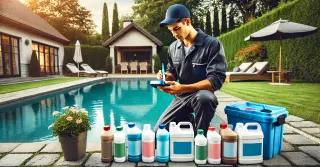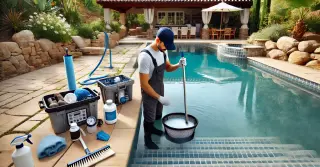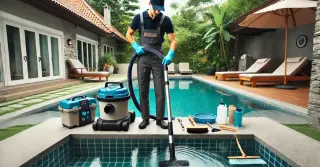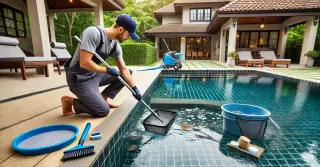Pool Chemical Balance Tremont MS

Keeping your pool's chemical balance in check is vital for swimmer safety and pool health. Balanced chemicals inhibit algae and bacteria, keep the water clear and clean, and protect the pool's surface and equipment.
- Optimal pH Balance: The pH level of your pool water indicates its acidity or alkalinity. A balanced pH level should be between 7.2 and 7.6. Low pH levels result in acidic water, causing skin irritation and equipment corrosion. High pH levels make the water alkaline, leading to cloudiness and scaling. Consistently testing and adjusting pH levels is essential to maintain a comfortable and safe swimming environment.
- Keeping Chlorine Balanced: Chlorine is a key component in pool sanitation, killing bacteria, algae, and other harmful microorganisms. Optimal chlorine levels range from 1 to 3 ppm. Low chlorine levels cause unsanitary water, with bacteria and algae proliferating. Excessive chlorine leads to skin and eye irritation and create a strong chlorine smell. Regularly testing and adjusting chlorine levels ensures effective sanitation and swimmer comfort.
Managing Total AlkalinityTotal alkalinity plays a vital role in pool water balance. Alkalinity buffers pH levels, preventing drastic pH fluctuations. The optimal total alkalinity range is 80-120 ppm.
- Stabilizing pH Levels: Correct alkalinity levels ensure stable pH, preventing rapid pH changes that irritate skin and damage surfaces. Low alkalinity results in unstable pH levels, making balance maintenance challenging. If alkalinity is too high, it can make the water cloudy and lead to scaling. Consistently monitoring and adjusting alkalinity levels is essential for maintaining a stable and balanced pool.
- Calcium Hardness Control: Calcium hardness refers to the amount of dissolved calcium in the pool water. Proper calcium hardness levels range from 200 to 400 ppm. Insufficient calcium causes corrosive water, damaging surfaces and equipment. If calcium levels are too high, it can cause scaling on pool surfaces and cloud the water. Regularly testing and adjusting calcium hardness is crucial for safeguarding your pool and maintaining clear water.
Proper Chemical Use and StorageHandling and storing pool chemicals properly is essential for both safety and effectiveness. Chemicals should be stored in a cool, dry place, away from sunlight, children, and pets. Follow the manufacturer's instructions for correct dosing and application.
- Accurate Chemical Measurement and Mixing: Measuring pool chemicals accurately is crucial for maintaining balance. Using too much or too little can disrupt the chemical balance and affect water quality. Use a clean, dry measuring cup or scoop and never mix chemicals directly with each other. Mix in water as needed, following guidelines carefully.
- Chemical Reaction Awareness: Certain chemicals can react dangerously if mixed. For example, chlorine and acid should never be mixed. Being aware of these interactions prevents accidents and ensures safe handling. Store chemicals apart and handle each carefully to avoid harmful reactions.
Maintaining the proper chemical balance in your pool is crucial for safety, cleanliness, and enjoyment. By frequently testing and balancing pH, chlorine, alkalinity, and calcium, you ensure optimal water quality.
Safe handling and storage of pool chemicals improve the safety and longevity of your pool.




